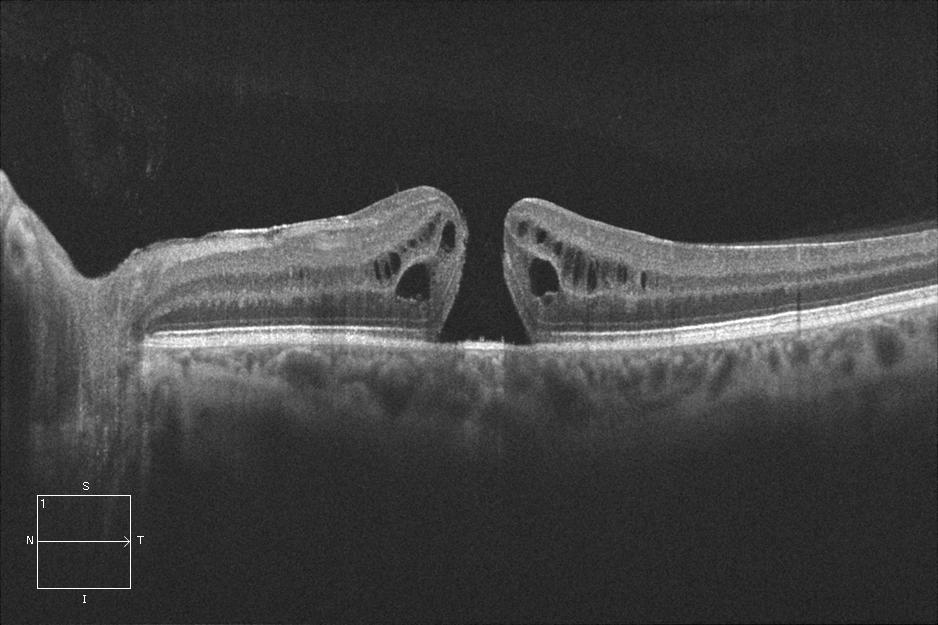Eye diseases
Macular hole

What is the macular hole?
A macular hole is a tear that occurs in the macula or centre of the retina. This area at the back of the eye (which is no more than 3 millimetres in diameter) is responsible for detailed vision, which provides us with the finest visual acuity and allows us to read, sew, recognise faces and perform many other precise everyday tasks.
A macular hole usually occurs due to the traction of the vitreous gel that fills the eyeball on the retina (the innermost layer of the eye) to which it is attached, breaking it and causing an opening in its most fragile and thinnest part: the macula.
Symptoms
A macular hole can be very subtle at first and go unnoticed, although, if it grows, it can end up severely affecting central vision, even causing a blind spot or stain in the centre of vision.
Although in some patients a macular hole can occur in both eyes, it usually affects only one eye. Thus, covering one eye first and then the other to compare your vision in each case (if you see more blurry, if straight lines seem crooked or wavy …), can help you detect this disease, as well as having regular check-ups with your ophthalmologist.





